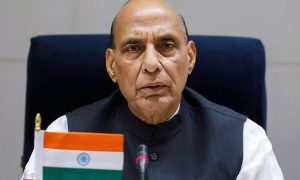The Union Cabinet on Thursday, July 8, approved the proposal of the Department of Agriculture, Cooperation and Farmers Welfare to make the post of Chairman, Coconut Development Board, a Non-Executive one. It also decided to increase the number of members from four to six, one from Andhra Pradesh and Gujarat each. The decision is set to benefit the coconut growers at large.
Coconut Development Board Act, 1979
The Coconut Development Board Act, 1979 was introduced to provide for the development of coconut industry and matters connected therewith. The Act extends to the whole of India.
Under the Act, the Coconut Development Board (CDB) was established on January 12, 1981 under section 4. The Board is a body corporate, and has the power to acquire, hold and dispose off property in its name.
Among the members of the Board is a Chairman. According to the Union Cabinet’s decision last evening, the post of the Chairman will now be a non-executive chairman. Further, the appointed non-executive chairman shall have field knowledge of agriculture.
The purpose of the Board is to promote the development of the coconut industry, and to adopt measures that particularly help the small coconut farmers become participants and beneficiaries in the development of the coconut industry. Further, the Board through various schemes, shall also adopt measures to improve production, productivity, marketing, enhance global competition, export and involve in the promotion of health benefit of coconuts.
Coconut cultivation in India
India is one of the largest producers of coconut in the world. Coconut or cocos nucifera or ‘kalpavriksha’ is a popular fruit plant cultivated in India. Further, it can be used in a variety of ways.
Coconut oil is used in cooking and for health care, the green coconut water has nutritional value, its roots in several cultures for the treatment of diarrhea and stomach pain, its husk fiber can be used for carpet making, or as a fertilizer for plants. The stalk and leaves of the coconut tree are also useful in construction works. Thus, every part of a coconut tree can be used in some or the other way.
The coconut palm is grown under varying climatic and soil conditions. The tropical plant requires an ideal balance of temperature and humidity for proper growth. The coconut palm grows well up to an elevation of 600 m above mean sea level. It might need irrigation in places with inadequate rainfall. It also requires plenty of sunlight for proper growth.
Coconut is mostly found in the coastal belt of the tropics where sandy and red sandy loam soils are predominant. However, the cultivation of coconut has slowly extended to inland areas, even to the hill tops, having varied soil conditions. It grows well in almost all types of soils including sandy, laterite, swampy, alluvial, black and saline soils, but requires good drainage system.
In India, Kerala, Tamil Nadu, Karnataka and Andhra Pradesh are the major coconut producing states, accounting for more than 90% of the area and production. However, with the adoption of scientific technologies in coconut cultivation has let to four-fold increase in yield.
Import/export
India is leading in the global coconut production and productivity. India ranks third in area and first in production of coconut in the world. As per the latest statistics available (2018-19), the annual coconut production in India is 23.90 billion nuts from an area of 2.15 million hectare with an average productivity of 9,897 nuts/hectare.
Coconut contributes about Rs. 27,900 crore to the country’s Gross Domestic Product (GDP). In the year 2016-17, coconut products worth of Rs. 2,084 crore were exported.
Coconut production has seen a significant increase in the country. During the period 2013 -15, coconut production was 42,104 million nuts whereas in 2015-17, it was 44,405 million nuts.
The export value of coconut products has increased from Rs. 3017.30 crore during 2011-14 to Rs. 4846.36 crore, which is 60.62% more. From 2016, India started exporting coconut oil to Malaysia, Indonesia, and Sri Lanka, the countries from where it imported earlier. Also, for the first time, desiccated coconut is being exported to the US and Europe in large quantities from India.
Coconut industry and livelihood
Ten million people in India depend on coconut for their livelihood either directly or indirectly. Further, the training programs conducted at the Farmers Training Centre, provide opportunity to more farmers to consider coconut cultivation.
In addition to this, an increase in coconut production increases the scope of employment for people through the production of various coconut based products like coconut chips, coconut milk, coconut sugar, coconut water, tender coconut water, coconut honey, coconut jaggery, coconut milkshake, coconut snacks, virgin coconut oil, coconut natural cream, more nee cookies and other products.






















 WhatsApp us
WhatsApp us